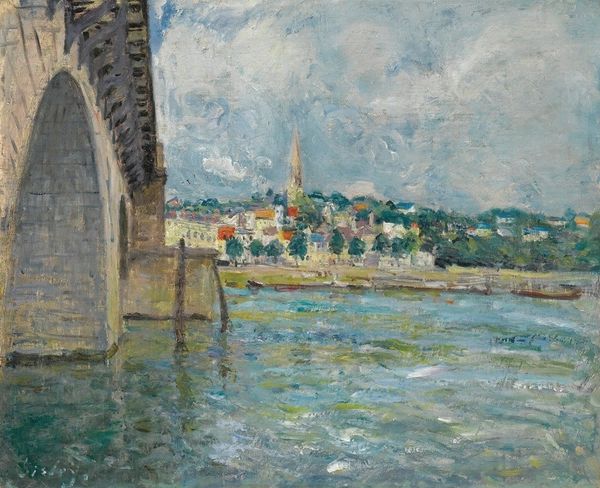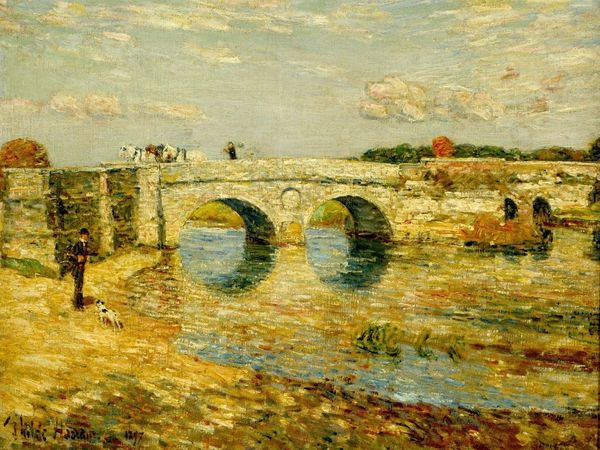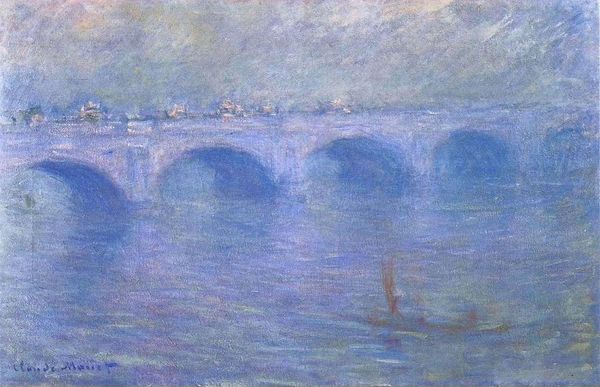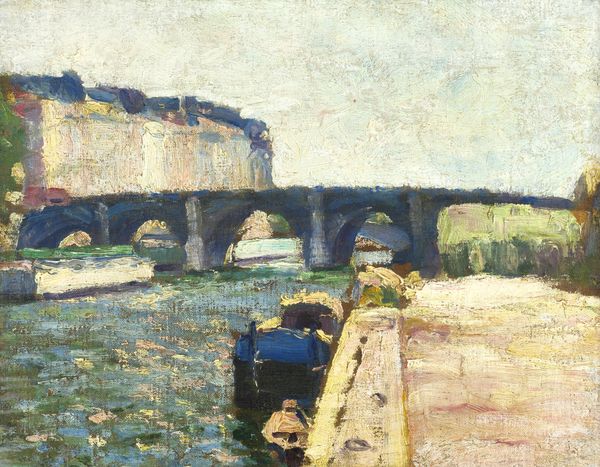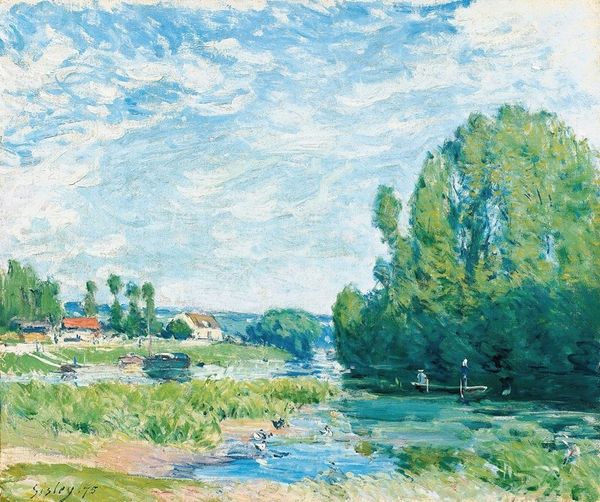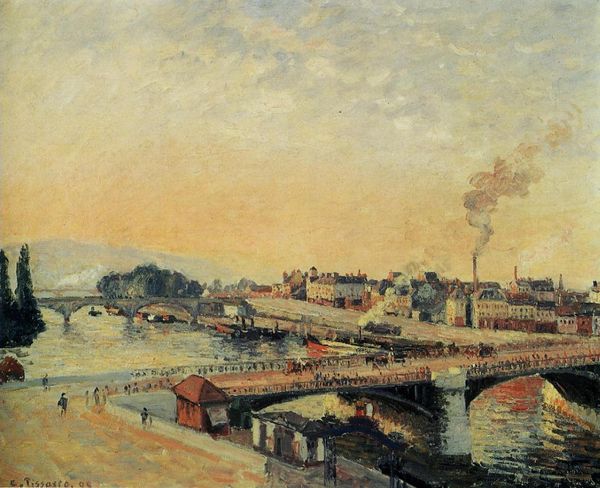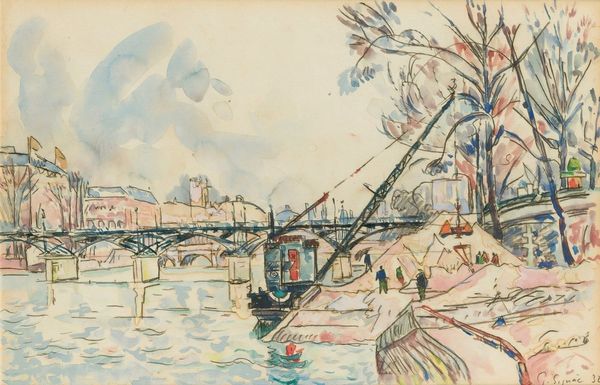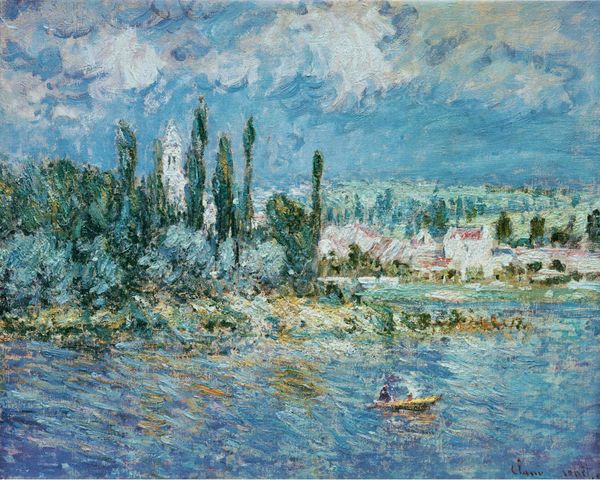
painting, plein-air, oil-paint
#
painting
#
impressionism
#
plein-air
#
oil-paint
#
landscape
#
impressionist landscape
#
oil painting
#
cityscape
Copyright: Public Domain: Artvee
Curator: Welcome. Today, we're looking at "Le Pont De Charenton, Ile De France," an oil painting attributed to Armand Guillaumin. Editor: It’s quite luminous! A very direct, unassuming landscape. The palette feels restricted yet lively with all those greens and blues, very material in the way the paint has been applied. Curator: Yes, it exemplifies plein-air painting and Impressionistic techniques. Considering Guillaumin’s position outside the core Impressionist group, his landscapes offer a distinct commentary on class and labor outside typically bourgeois Parisian life. This contrasts with his more well-known friends. Editor: The thick impasto and visible brushstrokes indicate an urgency, almost a sketch-like quality. I find myself thinking about the availability of pigments and brushes in the late 19th century, the burgeoning art market allowing this type of art-making. You see the ordinary figure of a man fishing depicted here—labor—as well as implied leisure through figures riding carriages over the bridge. Curator: Absolutely, the inclusion of both the working man and bourgeois activities offers a layered social critique. We have the bridge, itself a feat of engineering and commerce, acting as a conduit between these social classes. And if we understand the art market as yet another structure—the "means of production," if you will—how does the act of capturing this everyday scene, then, influence social commentary? Editor: By highlighting labor, by grounding the perspective at the same level as the fishing man, as if dignifying that work. He has clearly made deliberate choices here—the very process serves that social-minded function you raise. Curator: It compels us to consider these social hierarchies as integral elements within a picturesque, and otherwise, an "impressionistic landscape," almost as if these works function to expose inequality as yet another effect. Editor: Very interesting how material is deployed toward particular means. Curator: It reminds us to investigate the layers of meaning, intention, and socio-political circumstances that define not only what art depicts, but also its implications for society. Editor: Indeed, this examination really shifts my perception. The surface simplicity belies a wealth of complexity.
Comments
No comments
Be the first to comment and join the conversation on the ultimate creative platform.
